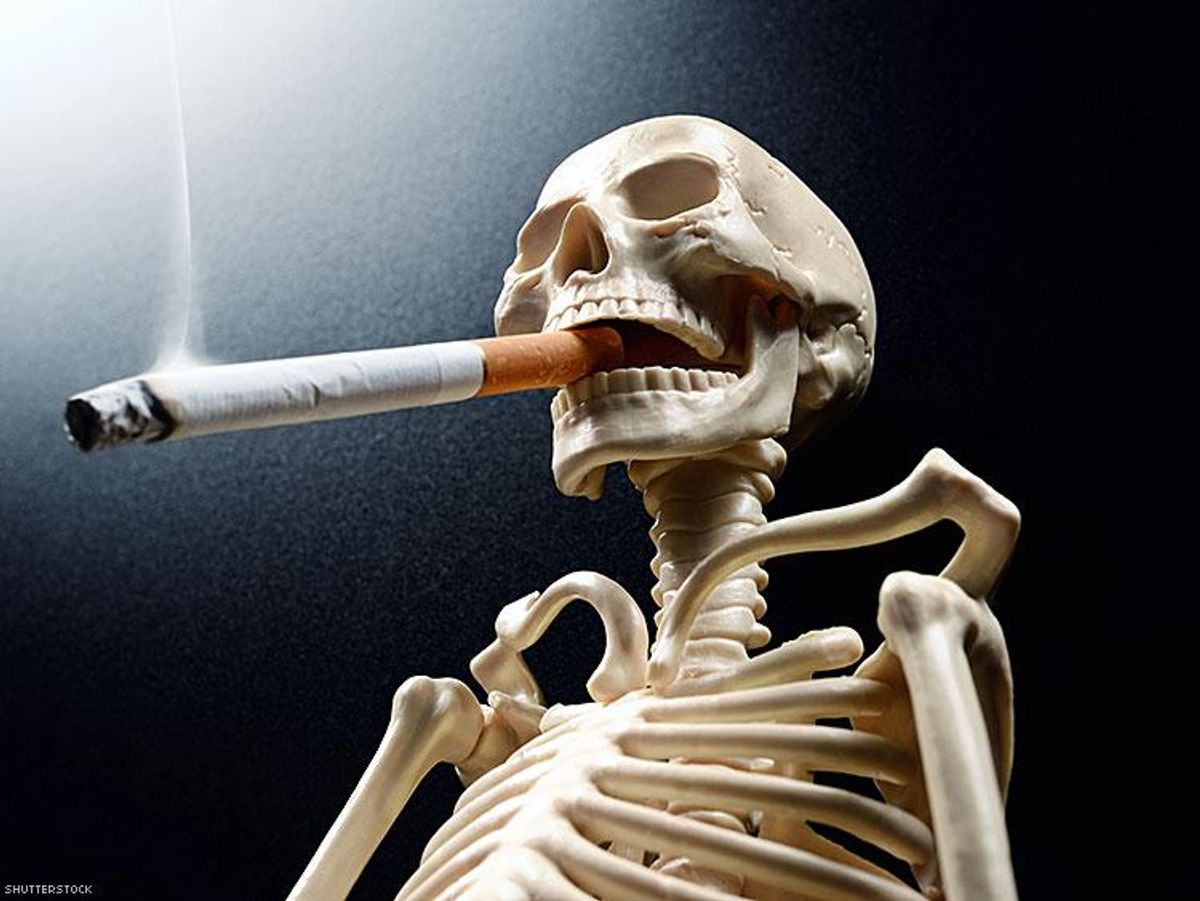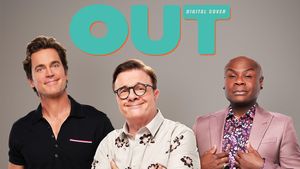Conversations about improving LGBT health are dominated by three topics: reducing HIV, improving mental health, and ending the epidemic of suicide in our community. But there is another issue facing LGBT people, and it demands to be addressed: smoking.
New research shows that HIV-positive smokers are more likely to die from their cigarettes than from complications of the virus. It's a dangerous finding, considering the LGBT community is burdened by disproportionately high rates of both smoking and HIV.
Though it comes as no surprise to those who frequent the patios of gay bars and nightclubs, LGBT people out-smoke the rest of the population by 68 percent. That means one in five members of our community at increased risk for cancer, heart disease, and lung disease. Transgender women are at an even greater immediate risk -- smoking while undergoing estrogen therapy dramatically increases the risk of blood clots.
Despite decades of best efforts by state and federal officials to tax cigarettes out of affordability and limit venues where smoking is permissible, the issue persists. Even drugstore giant CVS couldn't curb the habit when it announced in 2015 that it would no longer carry tobacco products.
In the face of failing strategies, it's time to seriously consider innovative solutions for tobacco harm reduction in the LGBT community.
The U.S. Food and Drug Administration has stepped up as one of the first domestic agencies to directly tackle smoking by LGBT people with a first-of-its-kind antismoking campaign dubbed "This Free Life."
The campaign attempts to circumvent our community's traditional resistance to antitobacco messaging by uniting relatable stories and recognizable faces -- including RuPaul alumnae Shangela, Trixie, Tammie, and Manila -- in the fight to make us tobacco-free.
Efforts to change smoking culture from within may well prove to be successful, but our harm reduction arsenal must amount to more than just the rainbow-colored cousin of a 1990s antismoking commercial.
In an unconventional turn, e-cigarettes and vaping may represent a promising first step in easing tobacco's burden on our community.
A 2016 report from the Royal College of Physicians in the U.K. estimated that e-cigarettes are at least 95 percent less harmful than traditional tobacco cigarettes, largely because users inhale vapor instead of carcinogenic smoke. And Stanton Glantz, director of University of California, San Francisco's Center for Tobacco Control Research and Education, has noted, "There's no question that a puff on an e-cigarette is less toxic than a puff on a regular cigarette."
In an eight-month study, researchers at the Catholic University of Leuven in Belgium found that e-cigarettes helped 44 percent of smokers reduce their tobacco consumption or eliminate it entirely. The American Heart Association even discourages physicians from rejecting a patient's decision to use e-cigarettes when gums, patches, and other cessation methods fail.
E-cigarettes are far from a perfect solution -- they still contain levels of nicotine, formaldehyde, and other chemicals -- but a less-than-perfect alternative is better than no alternative, especially when addressing groups, like LGBT smokers, who are particularly resistant to other messages of harm reduction and at greater risk for the complications brought on by cigarettes.
Even if science ultimately concludes that e-cigarettes are not particularly effective at aiding in ending smoking entirely, it could be years before such data is accumulated -- years that someone who smokes cigarettes today could be vaping "less toxic" e-cigarettes instead.
It's time to quit our habit of making the perfect the enemy of the good. Until our community successfully snuffs out smoking, we owe it to ourselves to explore every possible alternative for tobacco harm reduction.
GREGORY T. ANGELO is the president of Log Cabin Republicans, the nation's premier organization representing LGBT conservatives and allies.


















































































